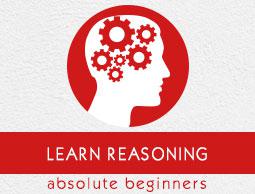Puzzle is considered as the toughest part of reasoning. In these days, various nation-wide exams are being conducted each year whether it is management entrance exams like CAT, XAT, MAT or bank selection exams like IBPS, SBI, RBI or any other exam. There is reasoning part and reasoning questions cannot be completed until there are puzzle questions.
Management entrance exams are high on puzzle questions. Especially, in CAT and XAT, the difficulty level of puzzle in reasoning is very high. In bank exams, normally there are a mix of all types of reasoning questions in the reasoning section. But in recent years, banks have shown their love towards puzzle. If a reasoning section in bank exams contains fifty questions then there are a minimum of 30 questions which are of puzzle type. Hence, in recent years whether it is management or any bank or PSU exam, puzzle is an important section of reasoning.
Puzzle is mainly of following types −
- Sitting arrangement (circular or rectangular)
- Sitting arrangement (facing towards north or south)
- Sitting arrangement (row I and row II facing each other)
- Blood relation
- Analytical reasoning
- Arithmetical reasoning
Sitting arrangement (circular and rectangular)
In these types of problems, a group of people sit around a circular table or a rectangular table. Then different types of arrangements are given in the questions. We have to read the question carefully and try to figure out what should be the exact sequence of sitting arrangement. Then put it on the circle or table which is given and find the answer.
Sitting arrangement (facing towards north or south)
This another type of sitting arrangement in which a group of people or students sit on a straight line facing north or south direction. Then different types of arrangements are given in the question. We have to read the question carefully and try to figure out what should be the exact sequence of sitting arrangement. Then put it on the straight line and arrange their faces towards north or south which is given and find the answer.
Sitting arrangement (row I and row II facing each other)
This is a different type of sitting arrangement in which there may be four to five people in each row and they face each other. Normally in these questions, the people in row I face south and the people of row II face north. In this way theyface each other. Then different types of arrangements are given in the question. We have to read the question carefully and try to figure out what should be the exact sequence of sitting arrangement. Then put them on row I or row II which is given and find the answer.
Blood Relation
In blood relation types of questions, normally two to three generation of a family is given and their names are given. We have to read the question and find the correct order of family tree. The blood relation questions come for just two to three marks. But for five or more than five marks, the blood relation question is normally different. It is not as easy as the above mentioned types of puzzles but a little more inspection can do the trick. For higher blood relation puzzles, along with family tree, the profession of each person is also added. So we have to look each case carefully and the profession along with the relation of the given persons.
Besides that, blood relation is attached with sitting arrangement and analytical reasoning. Such type of questions are frequently asked in the exams nowadays. These questions are normally time-taking and normally carry maximum marks.
Analytical Reasoning
After blood relation, analytical reasoning is the most asked question in reasoning. This is normally represented in tables. As the name suggests, these are analysis based reasoning questions. We have to analyse these questions deeply. Practice is the only key to tame such questions.
Arithmetical Reasoning
As the name suggests, such reasoning contains arithmetic questions. Puzzle regarding arithmetic comes in very less amount in exams. But these are very easy questions and are mark fetching in nature.



